Click on your
Sport
About your sport
Flag Football
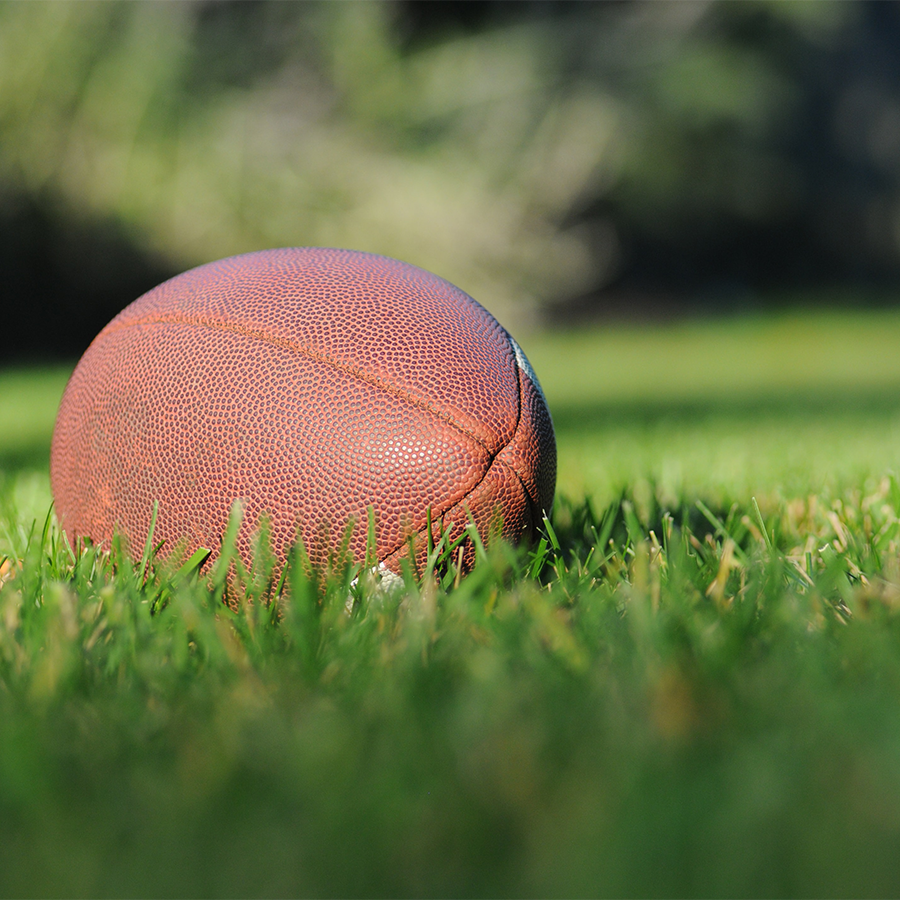
Age: Five and up
Gender: Majority male however there are now coed teams and all-girl teams.
Worth Noting: The sport is growing at rapid rates in the Northeast.
Equipment: An American football, flag belt consisting of two dangling flags and recommended mouth guard
Time of year played: Flexible. There are fall leagues that coincide with the NFL calendar however the season can vary across the USA. Some locations offer a fall, winter, and spring league.
Description: Flag football is a variant of American football however, instead of tackling players to the ground, the defensive team must remove a flag or flags from the ball carrier (“deflagging”) to end the play and contact is never permitted between players. Every game begins with a coin toss to determine which team will start with the ball (there’s no kickoff). Games are two 15-to-25-minute halves, depending on the league, and the clock only stops for timeouts (each team has three), injuries and half-time. On the rectangle shaped field (usually outdoors) the game consists of two teams of five (5v5) with substitutions on the sideline.
Read More
The starting team begins on its own 5-yard line and has four downs (essentially four plays) to cross midfield for a first down. The offensive team can move the ball forward by running the ball or throwing the ball and completing the catch. The team on defense can stop the play by pulling a flag of the ball carrier or intercepting a pass. If the offense fails to advance after three tries, they have two options: they can “punt,” which means they turn the ball over to the opposing team who starts its drive from its own 5-yard line, or they can go for it. But if they still fail to cross midfield, the opposing team takes over possession from the spot of the ball.
If the offensive team crosses midfield, they have three downs to score a touchdown. The rules of flag football only differ slightly from tackle when it comes to scoring: a touchdown is 6 points, and a safety is 2 points (1-point conversion from the 5-yard line; 2-point conversion from the 10-yard line). After both halves are concluded, the winner is the team with the most points.
Resource: https://nflflag.com/
Time of year played: Flexible. There are fall leagues that coincide with the NFL calendar however the season can vary across the USA. Some locations offer a fall, winter, and spring league.
Description: Flag football is a variant of American football however, instead of tackling players to the ground, the defensive team must remove a flag or flags from the ball carrier (“deflagging”) to end the play and contact is never permitted between players. Every game begins with a coin toss to determine which team will start with the ball (there’s no kickoff). Games are two 15-to-25-minute halves, depending on the league, and the clock only stops for timeouts (each team has three), injuries and half-time. On the rectangle shaped field (usually outdoors) the game consists of two teams of five (5v5) with substitutions on the sideline.
Read More
The starting team begins on its own 5-yard line and has four downs (essentially four plays) to cross midfield for a first down. The offensive team can move the ball forward by running the ball or throwing the ball and completing the catch. The team on defense can stop the play by pulling a flag of the ball carrier or intercepting a pass. If the offense fails to advance after three tries, they have two options: they can “punt,” which means they turn the ball over to the opposing team who starts its drive from its own 5-yard line, or they can go for it. But if they still fail to cross midfield, the opposing team takes over possession from the spot of the ball.
If the offensive team crosses midfield, they have three downs to score a touchdown. The rules of flag football only differ slightly from tackle when it comes to scoring: a touchdown is 6 points, and a safety is 2 points (1-point conversion from the 5-yard line; 2-point conversion from the 10-yard line). After both halves are concluded, the winner is the team with the most points.
Resource: https://nflflag.com/
About your sport
Basketball

Age: Five and up
Gender: Male/Female Sport
Equipment: A ball that bounces, two hoops and playing surfaces referred to as a court
Time of year played: Considered a winter sport. (Dec – March)
Description: Organized youth basketball is usually played indoors at a school gym or recreational center. It is a team sport where two teams of five players face off against each other. The object of the game is to shoot more baskets in your assigned “hoop” than the opposing team. The game consists of four periods.
Each period will vary in length depending on the age of the children (eight-10 minutes). The teams work together by passing and dribbling the ball down the court with their hands to eventually get close enough to their hoop and finally shoot the ball. When your team has the ball, this is referred to as offense and your objective is to score points, when you do not have the ball, this is referred to as defense; your objective is to steal the ball back by intercepting passes or catching the ball after the opposing team shoots (this is called rebounding the ball). At the conclusion of the four periods, the team will the most points is considered the winner. | Resource: https://youthguidelines.nba.com/
Description: Organized youth basketball is usually played indoors at a school gym or recreational center. It is a team sport where two teams of five players face off against each other. The object of the game is to shoot more baskets in your assigned “hoop” than the opposing team. The game consists of four periods.
Description: Each period will vary in length depending on the age of the children (eight-10 minutes). The teams work together by passing and dribbling the ball down the court with their hands to eventually get close enough to their hoop and finally shoot the ball. When your team has the ball, this is referred to as offense and your objective is to score points, when you do not have the ball, this is referred to as defense; your objective is to steal the ball back by intercepting passes or catching the ball after the opposing team shoots (this is called rebounding the ball). At the conclusion of the four periods, the team will the most points is considered the winner. | Resource: https://youthguidelines.nba.com/
About your sport
Baseball & softball

Age: Five and up
Gender: Generally, males play baseball and females play softball
Time of year played: Typically a spring and summer sport
Equipment: A hard ball, a bat, a leather glove for catching and fielding the ball, and four bases
Description: Two teams of nine players each face each other on an outdoor field where the bases are arranged in a diamond-shaped. The game usually consists of nine innings. One team is “at bat” while the other is “fielding”. The fielding team has a player called the pitcher, whose job is to throw the ball (pitch) to the batters.
The batter’s objective is to hit the ball from the pitcher and then run to the bases. If the batter touches all four bases before getting out they receive a point for their team. The fielding team will try and catch the “hit” before it touches the ground for an out or touch the base with the ball before the hitter get there.When the fielding team gets three outs the teams switch from “at bate” to “fielding”; this will happen nine different times. The team who has the most points at the end is the game winner. | Resource: https://www.littleleague.org/
Description: Two teams of nine players each face each other on an outdoor field where the bases are arranged in a diamond-shaped. The game usually consists of nine innings. One team is “at bat” while the other is “fielding”. The fielding team has a player called the pitcher, whose job is to throw the ball (pitch) to the batters.
Description: The batter’s objective is to hit the ball from the pitcher and then run to the bases.If the batter touches all four bases before getting out they receive a point for their team. The fielding team will try and catch the “hit” before it touches the ground for an out or touch the base with the ball before the hitter get there.When the fielding team gets three outs the teams switch from “at bate” to “fielding”; this will happen nine different times. The team who has the most points at the end is the game winner. | Resource: https://www.littleleague.org/
About your sport
golf

Age: Three and up
Gender: Male/Female Sport
Equipment: Golf clubs (up to 14 different clubs), golf balls, tees, and a golf bag
Time of year played: Flexible. Golf is an outdoor sport and participation is mostly based on weather.
Description: Golf is a club and ball sport where participants hit the ball with their golf club toward the target, which is a hole. The main objective is to get the ball in the hole in the fewest possible hits, known as “strokes.” A regulation golf course consists of 18 holes, however there are some courses that are nine holes. A round of 18 holes takes about four hours to complete.
It is an individual sport, and the strokes are counted separately for each hole and then added together at the end for your total score.
Each game starts by putting your ball (usually white-colored) on a wooden peg known as the tee, which slightly elevates the ball off the grass. Then you will strike the ball with one of your largest clubs toward the hole. Golf is often played in groups of one to four people, and after each person hits their ball, the group moves forward together as everyone hits their own personal ball toward the target. Each individual golfer keep track of their own score. Each strike of the ball counts as one stroke; you stop counting when your ball makes it into the hole on the green. The ball must be on the ground at a standstill when hitting it, meaning you can not hit a moving ball.
Read More
All the holes on a golf course are numbered 1 through 18, and golfers must follow the holes chronologically. After completing the course, either nine or 18 holes, you add your total strokes together. If you are playing in a group of two to four players, the golfer with the lowest number of strokes is the winner. Resource | https://www.usga.org/
Description: Golf is a club and ball sport where participants hit the ball with their golf club toward the target, which is a hole. The main objective is to get the ball in the hole in the fewest possible hits, known as “strokes.” A regulation golf course consists of 18 holes, however there are some courses that are nine holes. A round of 18 holes takes about four hours to complete.
Description: It is an individual sport, and the strokes are counted separately for each hole and then added together at the end for your total score.
Each game starts by putting your ball (usually white-colored) on a wooden peg known as the tee, which slightly elevates the ball off the grass. Then you will strike the ball with one of your largest clubs toward the hole. Golf is often played in groups of one to four people, and after each person hits their ball, the group moves forward together as everyone hits their own personal ball toward the target. Each individual golfer keep track of their own score. Each strike of the ball counts as one stroke; you stop counting when your ball makes it into the hole on the green. The ball must be on the ground at a standstill when hitting it, meaning you can not hit a moving ball.
Read More
All the holes on a golf course are numbered 1 through 18, and golfers must follow the holes chronologically. After completing the course, either nine or 18 holes, you add your total strokes together. If you are playing in a group of two to four players, the golfer with the lowest number of strokes is the winner. Resource | https://www.usga.org/
About your sport
Gymnastics
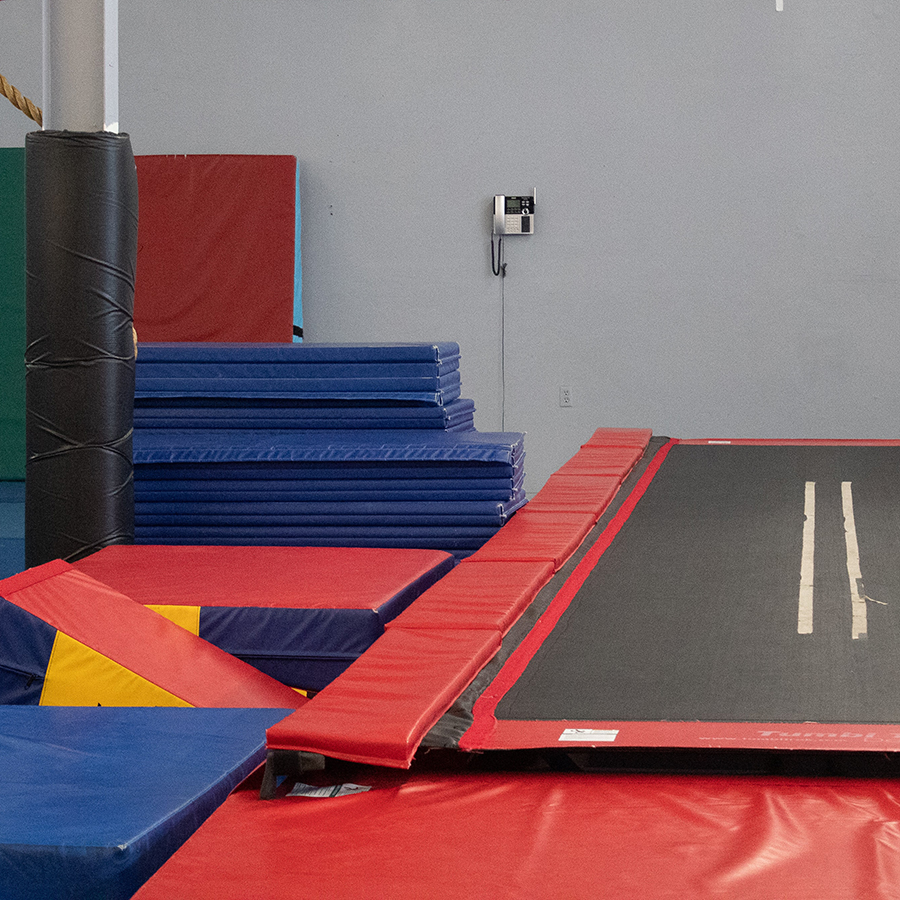
Age: Three and up
Gender: Mostly female (up to 80%), however, you will find more males in introductory classes and at elite levels
Equipment: A large open indoor facility that would resemble a warehouse. Inside you will find four to eight different apparatuses: uneven bars, balance beam, vault, spring loaded floor, rings, pommel horse, parallel bars and a horizontal bar.
Female gymnasts wear a leotard, similar to a one-piece bathing suit, to practice and for competitions, while males wear a competition shirt and/or pants or shorts.
Time of year played: Flexible. Most recreational classes are month-to-month throughout the year (pay as you go) while competitive gymnastics prepares during the fall for the winter or spring “competition” season and then uses the summer to learn new skills and recover.
Description: Gymnastics is a non-contact sport but also a very physical one that requires balance, flexibility, coordination and strength. The mental side of gymnastics can be just as taxing, as participants must memorize routines and are independently judged on each event. This takes extreme focus, dedication and discipline.
Gymnastics develops strength in many parts of the athlete’s body, including arms, shoulders, legs, back and especially abdominals since they train on many different apparatuses. This sport has many transferable skills and is a good starter sport for boys and girls. Youth athletes who chose to do competitive gymnastics may have trouble doing other sports, as most coaches prefer you specialize in gymnastics early on.
Read More
Training for a talented 6-year-old can consist of 12-15 hours per week and weekend competitions. As gymnasts advance through the levels, their trainings get longer and more demanding and travel increases.
Recreational gymnastics is usually a 45-to-60-minute weekly class at a neighborhood location. These classes offer a variety of activities—challenging kids to do summer saults, walk across beams and hang from bars—and music often plays for the duration of the class. Resource | usagym.org and www.usagymparents.com
Female gymnasts wear a leotard, similar to a one-piece bathing suit, to practice and for competitions, while males wear a competition shirt and/or pants or shorts.
Time of year played: Flexible. Most recreational classes are month-to-month throughout the year (pay as you go) while competitive gymnastics prepares during the fall for the winter or spring “competition” season and then uses the summer to learn new skills and recover.
Description: Gymnastics is a non-contact sport but also a very physical one that requires balance, flexibility, coordination and strength. The mental side of gymnastics can be just as taxing, as participants must memorize routines and are independently judged on each event. This takes extreme focus, dedication and discipline.
Gymnastics develops strength in many parts of the athlete’s body, including arms, shoulders, legs, back and especially abdominals since they train on many different apparatuses. This sport has many transferable skills and is a good starter sport for boys and girls. Youth athletes who chose to do competitive gymnastics may have trouble doing other sports, as most coaches prefer you specialize in gymnastics early on.
Read More
Training for a talented 6-year-old can consist of 12-15 hours per week and weekend competitions. As gymnasts advance through the levels, their trainings get longer and more demanding and travel increases.
Recreational gymnastics is usually a 45-to-60-minute weekly class at a neighborhood location. These classes offer a variety of activities—challenging kids to do summer saults, walk across beams and hang from bars—and music often plays for the duration of the class. Resource | usagym.org and www.usagymparents.com
About your sport
Ice Hockey

Age: Six and up
Gender: Male/Female Sport
Equipment: A rectangular ice rink, two goals at opposite ends, a hockey puck and equipment for players (ice skates, body pads, a protective mask and a hockey stick)
Time of year played: Typically a winter sport
Description: Ice hockey is a contact team sport played on ice sakes, usually on an ice skating rink with lines and markings specific to the sport. In ice hockey, two opposing teams use hockey sticks to control, advance and shoot a small, hard rubber disc called a “puck” into the other team’s goal. Each goal is worth one point.
The team which scores the most goals is declared the winner, with each game typically consisting of three 20-minute periods. However, recreational leagues and children’s leagues often play shorter games, generally with three shorter periods of play. In a formal game, each team has six skaters on the ice at a time, including one goaltender. | Resource: www.usahockey.com
Description: Ice hockey is a contact team sport played on ice sakes, usually on an ice skating rink with lines and markings specific to the sport. In ice hockey, two opposing teams use hockey sticks to control, advance and shoot a small, hard rubber disc called a “puck” into the other team’s goal. Each goal is worth one point.
Description: The team which scores the most goals is declared the winner, with each game typically consisting of three 20-minute periods. However, recreational leagues and children’s leagues often play shorter games, generally with three shorter periods of play. In a formal game, each team has six skaters on the ice at a time, including one goaltender. | Resource: www.usahockey.com
About your sport
Karate

Age: Three and up
Gender: Male/Female Sport
Equipment: A white karate uniform consisting of white karate pants and a white karate top, as well as a colored belt. For free-fighting karate, hand mitts, a chest protector, and a mouthpiece are also required.
Time of year played: Karate competitors participate in all seasons, as it is an indoor sport usually carried out on a square-shaped, padded platform.
Description: Karate is a form of martial arts, originating in East Asia, that features a specific type of combat used for self-defense with a particular focus on physical, mental and spiritual development.
Karate sees participants execute punching, kicking, knee strikes, elbow strikes and open-hand techniques such as knife-hands, spear-hands and palm-heel strikes. Karate competition has two disciplines: sparring and forms. Competitors may enter either as individuals or as part of a team. Evaluation for forms is performed by a panel of judges, with participants executing a series of dynamic moves with their arms and legs while attempting to maintain perfect form.
Read More
Forms is not a head-to-head fight but a display of transition and flow from one posture and movement to another. Sparring, which involves two competitors squaring off against each other, is judged by a head referee. Sparring matches are typically divided by weight, age, gender and experience. The Karate ranking system consists of nine belts in different colors. Ranging from beginner belt to more advanced ones, karate belts colors are as follows: white, yellow, orange, green, blue, purple, red, brown and black. | Resource: www.wkf.net
Time of year played: Karate competitors participate in all seasons, as it is an indoor sport usually carried out on a square-shaped, padded platform.
Description: Karate is a form of martial arts, originating in East Asia, that features a specific type of combat used for self-defense with a particular focus on physical, mental and spiritual development.
Description: Karate sees participants execute punching, kicking, knee strikes, elbow strikes and open-hand techniques such as knife-hands, spear-hands and palm-heel strikes. Karate competition has two disciplines: sparring and forms. Competitors may enter either as individuals or as part of a team. Evaluation for forms is performed by a panel of judges, with participants executing a series of dynamic moves with their arms and legs while attempting to maintain perfect form.
Read More
Forms is not a head-to-head fight but a display of transition and flow from one posture and movement to another. Sparring, which involves two competitors squaring off against each other, is judged by a head referee. Sparring matches are typically divided by weight, age, gender and experience. The Karate ranking system consists of nine belts in different colors. Ranging from beginner belt to more advanced ones, karate belts colors are as follows: white, yellow, orange, green, blue, purple, red, brown and black. | Resource: www.wkf.net
About your sport
Lacrosse
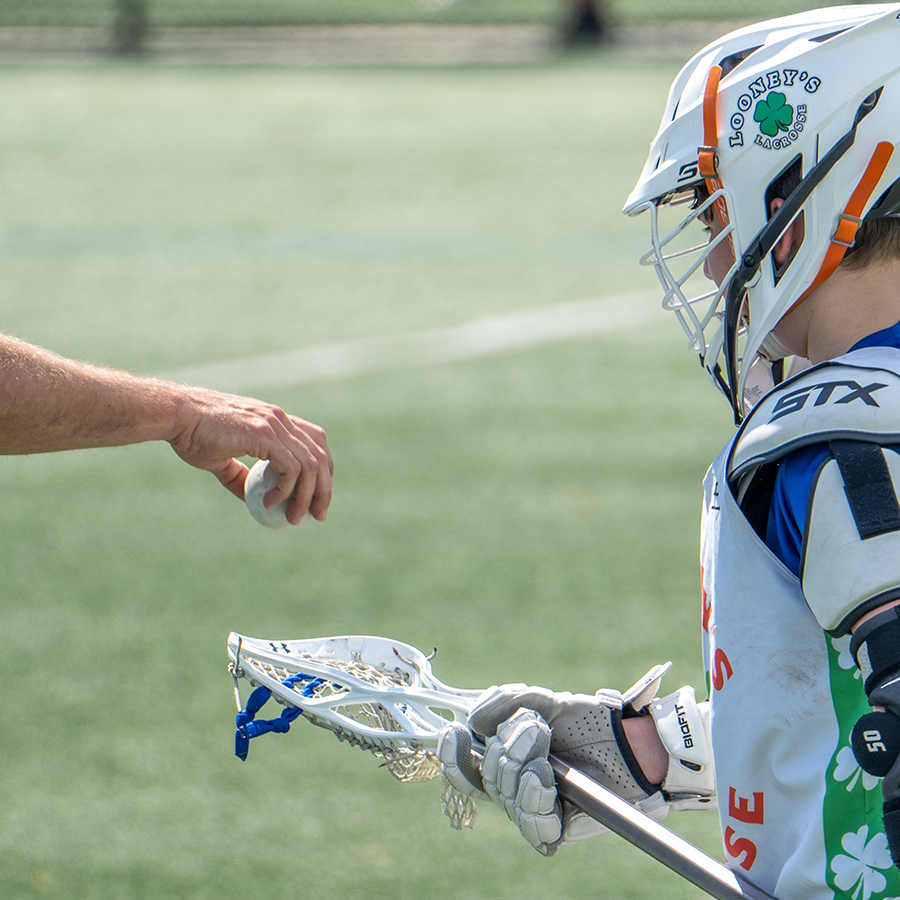
Age: Seven and up
Gender: Male/Female Sport
Equipment: A rectangular field with two lacrosse goals on opposite ends, a small lacrosse ball and equipment for players, including a helmet and pads and a lacrosse stick
Time of year played: Typically a spring sport, although competitive teams also compete in the summer and fall
Description: Players use the head of the lacrosse stick to carry, pass, catch and shoot the ball into the goal. The sport has two versions that have different sticks, fields, rules and equipment: field lacrosse, usually contested by males, and women’s lacrosse. Field lacrosse is a contact sport and all players wear protective gear, including helmets, gloves shoulder pads, and elbow pads.
The women’s game is played outdoors and does not allow body contact but does allow stick-to-stick contact. The only protective gear required for female players is eye gear, while goalies wear helmets and protective pads. Infield lacrosse, there are ten players on each team—three attackers, three midfielders, three defenders and one goalie.
Read More
Each team must always keep four players in its defensive zone and three players in its offensive zone. Games are typically contested in four quarters of 10-15 minutes. The team that scores the most goals over the course of the game is the winner. The rules of women’s lacrosse differ significantly from field lacrosse, most notably by equipment and the degree of allowable physical contact. Women’s lacrosse does not allow physical contact, the only protective equipment worn is a mouth guard and eye-guard.| Resource: www.usalacrosse.com
Description: Players use the head of the lacrosse stick to carry, pass, catch and shoot the ball into the goal. The sport has two versions that have different sticks, fields, rules and equipment: field lacrosse, usually contested by males, and women’s lacrosse. Field lacrosse is a contact sport and all players wear protective gear, including helmets, gloves shoulder pads, and elbow pads.
Description: The women’s game is played outdoors and does not allow body contact but does allow stick-to-stick contact. The only protective gear required for female players is eye gear, while goalies wear helmets and protective pads. Infield lacrosse, there are ten players on each team—three attackers, three midfielders, three defenders and one goalie.
Read More
Each team must always keep four players in its defensive zone and three players in its offensive zone. Games are typically contested in four quarters of 10-15 minutes. The team that scores the most goals over the course of the game is the winner. The rules of women’s lacrosse differ significantly from field lacrosse, most notably by equipment and the degree of allowable physical contact. Women’s lacrosse does not allow physical contact, the only protective equipment worn is a mouth guard and eye-guard.| Resource: www.usalacrosse.com
About your sport
Soccer

Age: Three and up
Gender: Male/Female Sport
Equipment: A soccer ball, a rectangle-shaped playing field, two soccer goals stationed at opposite sides of the field, plus soccer cleats and shin guards for players
Time of year played: Typically a fall and spring sport, although competitive soccer
spans all seasons (with play becoming less common in the winter)
Description: A soccer match is played by two teams, each consisting of up to 11 players including the goalkeeper. Most youth leagues play with fewer than 11 players until the age 12 or 14.Adult games feature two halves of 45 minutes each, with a 15-minute halftime.
Youth leagues consist of halves between 20-45 minutes depending on age. The objective of the game is to score more goals than the opposition by moving the ball beyond the goal line into the opposing goal, usually within a time frame of 90 or more minutes. The two teams compete to get the ball into the other team’s goal (between the posts and under the bar), thereby scoring a goal.
Read More
Players are not allowed to touch the ball with hands or arms while it is in play, except for the goalkeepers within the penalty area. Players can use any other part of their body to strike or pass the ball and mainly use their feet. The team that has scored more goals at the end of the game is the winner. If both teams have scored an equal number of goals, it either ends in a tie or the game goes into extra time or a penalty shootout, depending on the format of the competition. | Resource: www.usyouthsoccer.org
spans all seasons (with play becoming less common in the winter)
Description:A soccer match is played by two teams, each consisting of up to 11 players including the goalkeeper. Most youth leagues play with fewer than 11 players until the age 12 or 14.Adult games feature two halves of 45 minutes each, with a 15-minute halftime.
Description: Youth leagues consist of halves between 20-45 minutes depending on age. The objective of the game is to score more goals than the opposition by moving the ball beyond the goal line into the opposing goal, usually within a time frame of 90 or more minutes. The two teams compete to get the ball into the other team’s goal (between the posts and under the bar), thereby scoring a goal.
Read More
Players are not allowed to touch the ball with hands or arms while it is in play, except for the goalkeepers within the penalty area. Players can use any other part of their body to strike or pass the ball and mainly use their feet. The team that has scored more goals at the end of the game is the winner. If both teams have scored an equal number of goals, it either ends in a tie or the game goes into extra time or a penalty shootout, depending on the format of the competition. | Resource: www.usyouthsoccer.org
About your sport
Swimming
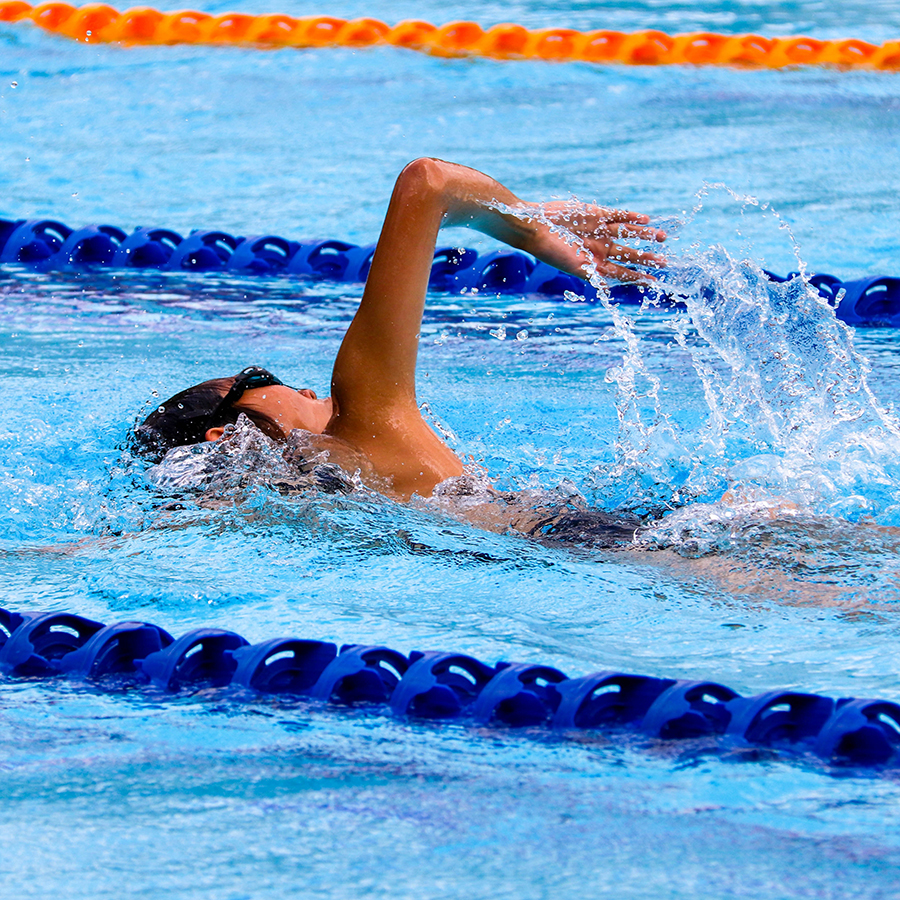
Age: Four and up
Gender: Male/Female Sport
Equipment: A competition-style swimming pool consisting of multiple lanes, plus a swimsuit, swim cap and goggles for competitors
Time of year played: Typically a winter sport, although competitive swimmers compete throughout each season
Description: Swimming is an individual or team racing sport that requires the use of an individual’s entire body to move through water. The sport takes place in pools or open water, such as a sea or a lake. Competitive swimming features a wide variety of specified distances and strokes, including butterfly, backstroke, breaststroke, freestyle and individual medley.
In addition to these individual events, four swimmers can take part in either a freestyle or medley relay. A medley relay consists of four swimmers who will each swim a different stroke, ordered as backstroke, breaststroke, butterfly and freestyle. The individual or team that completes the race first is declared the winner. | Resource: www.usaswimming.org
Description: Swimming is an individual or team racing sport that requires the use of an individual’s entire body to move through water. The sport takes place in pools or open water, such as a sea or a lake. Competitive swimming features a wide variety of specified distances and strokes, including butterfly, backstroke, breaststroke, freestyle and individual medley.
Description: In addition to these individual events, four swimmers can take part in either a freestyle or medley relay. A medley relay consists of four swimmers who will each swim a different stroke, ordered as backstroke, breaststroke, butterfly and freestyle. The individual or team that completes the race first is declared the winner. | Resource: www.usaswimming.org
About your sport
Tennis
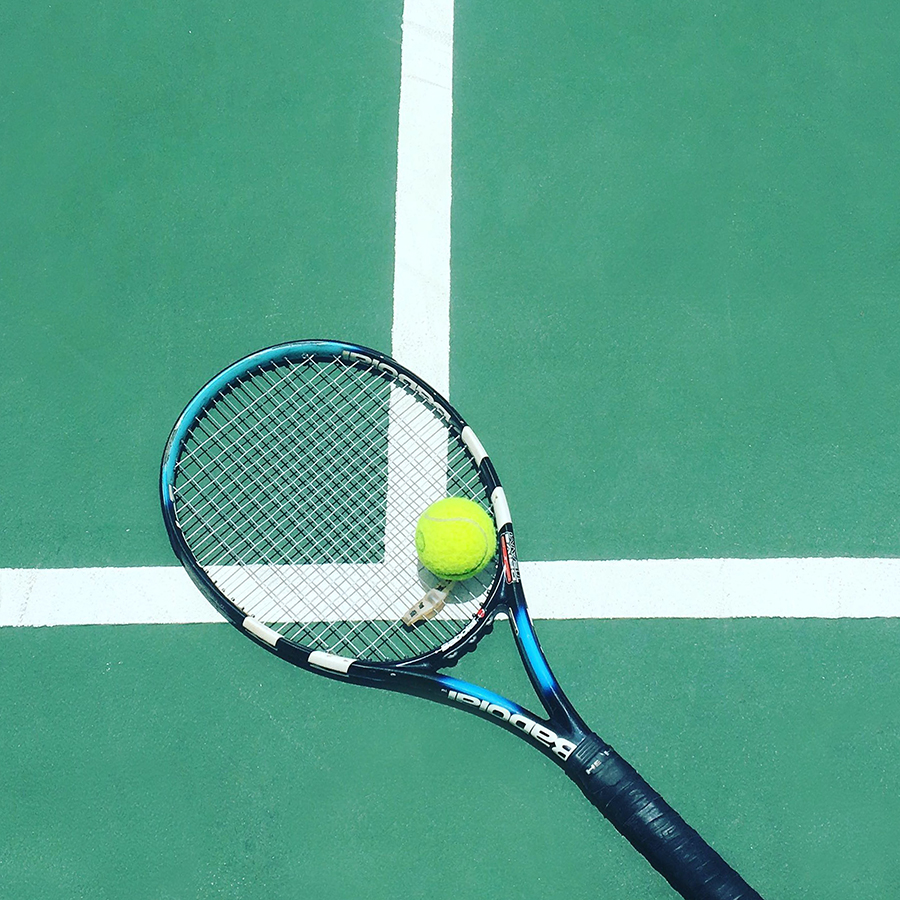
Age: Five and up
Gender: Male/Female Sport
Equipment: A rectangular playing court divided by a net, a tennis ball and a tennis racket for each participant
Time of year played: Typically a spring sport and mostly contested outdoors, but competitive players compete throughout all seasons indoor and outdoor
Description: Tennis is a racket sport that can be played individually against a single opponent (singles) or between two teams of two players each (doubles). Each player uses a tennis racket to strike a hollow rubber ball covered with felt over or around a net and into the opponent’s court. The object of the game is to strike the ball in such a way that the opponent is not able to return it with a strike of their own.
The player who is unable to return the ball will not gain a point, while the opposite player will receive a point. The players or teams start on opposite sides of the net. One player is designated the server, and the opposing player is the receiver. A player’s serve starts a “rally” in which the players alternate hitting the ball across the net. A “return” consists of a player hitting the ball so that it falls in the server’s court, before it has bounced twice. A player or team cannot hit the ball twice in a row. The ball must travel over or round the net into the other players’ court.
Read More
A “game” consists of a sequence of points played with the same player serving. A game is won by the first player to have won at least four points in total and at least two points more than the opponent. The running score of each game is described in a manner specific to tennis: scores from zero to three points are described as “love”, “15”, “30” and “40”, respectively. A “set” consists of a sequence of games played with service alternating between games, ending when the count of games won meets certain criteria. Typically, a player wins a set by winning at least six games and at least two games more than the opponent. A tennis match consists of a sequence of sets. The winner is determined through a best-of-three or best-of-five system.| Resource: www.usta.com
Description: Tennis is a racket sport that can be played individually against a single opponent (singles) or between two teams of two players each (doubles). Each player uses a tennis racket to strike a hollow rubber ball covered with felt over or around a net and into the opponent’s court. The object of the game is to strike the ball in such a way that the opponent is not able to return it with a strike of their own.
Description: The player who is unable to return the ball will not gain a point, while the opposite player will receive a point. The players or teams start on opposite sides of the net. One player is designated the server, and the opposing player is the receiver. A player’s serve starts a “rally” in which the players alternate hitting the ball across the net. A “return” consists of a player hitting the ball so that it falls in the server’s court, before it has bounced twice. A player or team cannot hit the ball twice in a row. The ball must travel over or round the net into the other players’ court.
Read More
A “game” consists of a sequence of points played with the same player serving. A game is won by the first player to have won at least four points in total and at least two points more than the opponent. The running score of each game is described in a manner specific to tennis: scores from zero to three points are described as “love”, “15”, “30” and “40”, respectively. A “set” consists of a sequence of games played with service alternating between games, ending when the count of games won meets certain criteria. Typically, a player wins a set by winning at least six games and at least two games more than the opponent. A tennis match consists of a sequence of sets. The winner is determined through a best-of-three or best-of-five system.| Resource: www.usta.com
About your sport
Volleyball
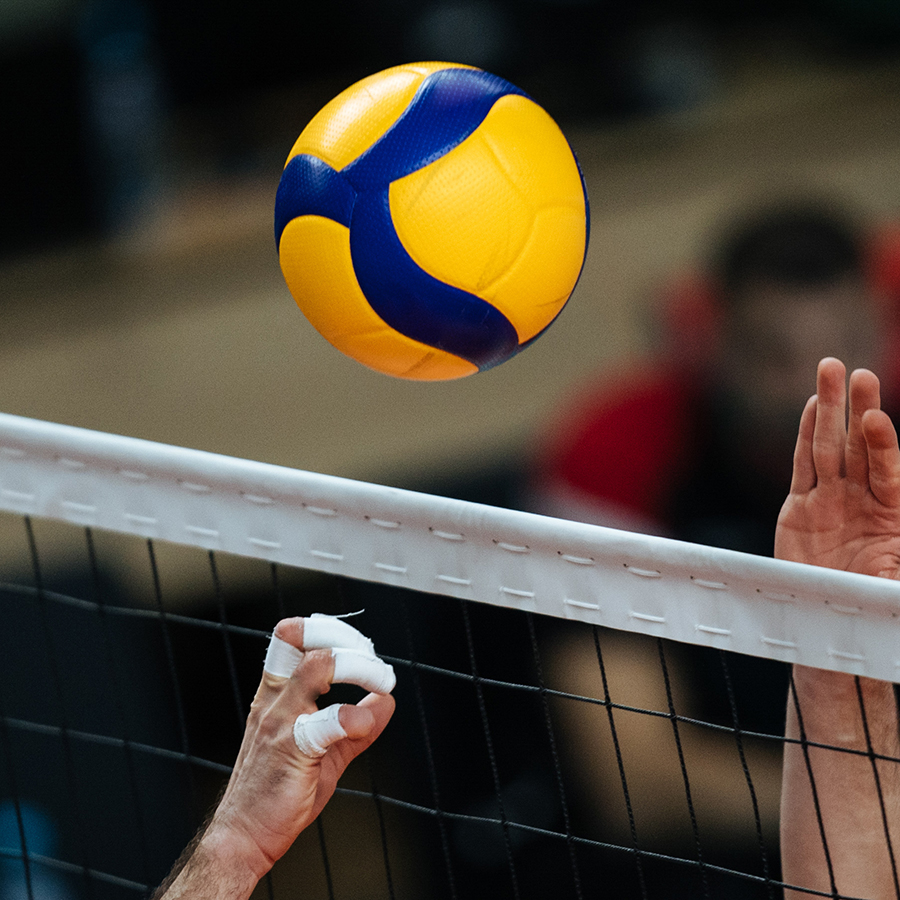
Age: Eight and up
Gender: Male/Female Sport
Equipment: A volleyball, a rectangle-shaped playing court and a volleyball net that divides the court into two halves
Time of year played: Typically a fall and winter sport, especially for girls, but
competitive volleyball runs through each season.
Description: Play is typically organized with two teams organized in a formation on either side of a net. Each team attempts to score points by sending the ball over the net to their opponent, with the goal of having the ball hit the ground to end each “rally.”
To begin play, one team serves the ball over the net to the opposing team. Once the serve has been received, the receiving team has up to three contacts before they must send the ball back over the net to continue the rally. The rally continues, with each team allowed as many as three consecutive touches, until either a team makes a “kill” by grounding the ball on the opponent’s court and winning the rally, or when a team commits a fault and loses the rally.
Read More
The team that wins the rally is awarded a point and serves the ball to start the next rally. Players rotate clockwise around the court in a set order depending on who has possession of the ball. The game is usually contested in a best-of-five format with the first team to 25 points winning each game. The first team to win three games wins the match. | Resource: https://usavolleyball.org
competitive volleyball runs through each season.
Description: Play is typically organized with two teams organized in a formation on either side of a net. Each team attempts to score points by sending the ball over the net to their opponent, with the goal of having the ball hit the ground to end each “rally.”
Description: To begin play, one team serves the ball over the net to the opposing team. Once the serve has been received, the receiving team has up to three contacts before they must send the ball back over the net to continue the rally. The rally continues, with each team allowed as many as three consecutive touches, until either a team makes a “kill” by grounding the ball on the opponent’s court and winning the rally, or when a team commits a fault and loses the rally.
Read More
The team that wins the rally is awarded a point and serves the ball to start the next rally. Players rotate clockwise around the court in a set order depending on who has possession of the ball. The game is usually contested in a best-of-five format with the first team to 25 points winning each game. The first team to win three games wins the match. | Resource: https://usavolleyball.org

Questionare
Who is this for?
If any of these sentiments resonated with you, I am here to help!
Oh gosh—seriously, this is for so many of you out there. Let me give you a few examples and we’ll see if you nod your head to any of these! And if you did, pinky swear you will schedule a call with me and we will solve all the challenges and questions you may have regarding sports!
Are classes titled “Parent and Me” really necessary? I am really not involved in the participation side of my kid’s activities?
I need to talk through my kid’s schedule with someone. My partner works a lot and told me to take care of it.
My child is 9 years old and their coach does not want them to play other sports. I was told, “It time to specialize and focus on one sport.”
How many sports is too many sports? My kids currently have one or two activities each night, but I promise they like all of them!
I am a grandparent and I think my daughter has lost her mind. My grandkids are involved in everything under the sun. How should I approach my daughter?
I want my child to be well-rounded, so we try a lot of new things. If they decide after a lesson or two that they don’t like an activity, let them quit. Is that OK?
Focus
My Expertise
- Youth Development 67%
- Sports Development 70%
- Coaching Development 45%
From my clients
Testimonials
“Betsy helped bring clarity to our youth sports journey. We discussed a few of my daughter’s strengths & personality traits and based on that Betsy recommended a couple of different sports. ia m happy to report my daughter is loving her new soccer team.”
– Sara B.
“What a blessing! Betsy’s calming voice reduced my anxiety as fall sports calendar approached. I was simply getting overwhelmed and needed someone to talk to.”
– Alica F.
“My son is 11 years old and has been asked to specialize in one particular sport. I had a lot of hesitations to be honest. Betsy was able to talk to me about the “ask” from the coach’s point of view, provided some really good resources to read, and helped me make an educated decision.
– Josie A.
